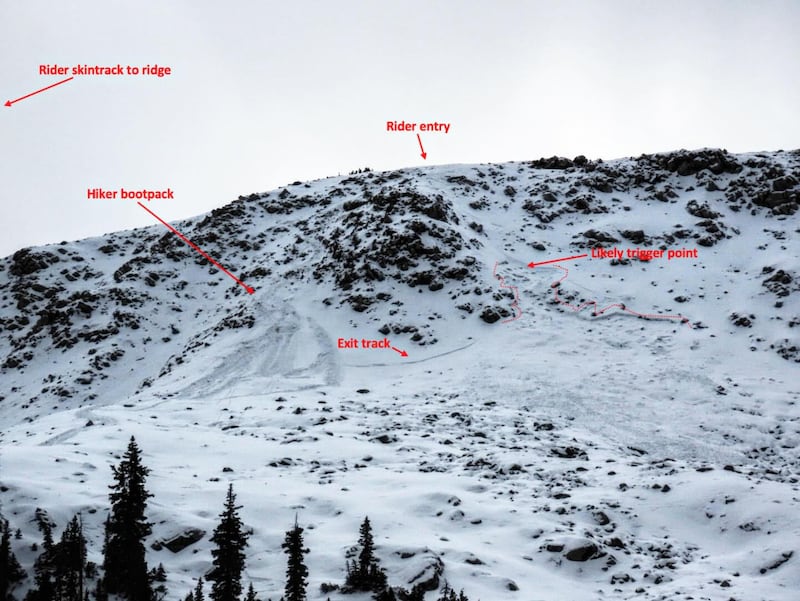Utah’s ski resorts have struggled to open this season with little snow in the mountains, but it appears Utah’s avalanche season is already in full swing.
Utah Avalanche Center officials took to social media to warn about the hidden dangers in the state’s mountains, following an avalanche over the weekend that the agency investigated in Little Cottonwood Canyon.
The incident occurred near the Red Pine Lake area of the canyon on Sunday. A backcountry snowboarder was sliding down the slopes at 10,600 feet elevation within the lake’s drainage when they triggered a 150-foot-wide and 1-foot-deep avalanche that traveled about 200 feet, according to Utah Avalanche Center forecaster Brooke Maushund, who visited the site as part of an investigation.

The snowboarder was uninjured, but the incident was still jarring, considering the snow totals so far this year.
“We know folks are eager to make early-season turns, but let this serve as a reminder: Avalanches are officially on the menu,” the agency wrote.
Snowpack totals — a measure of water within the mountain snow, but also a gauge of snow quantities — are well below normal across northern and central Utah right now. Most basins have totals at less than 50% of the median average for late November, including levels as low as 4% in the Tooele Valley-Vernon Creek basin, the Utah Natural Resources Conservation Service reported on Wednesday.
Several Utah resorts have had to push back their opening days because of this. Solitude Mountain Resort is still on track to open on Thanksgiving, which would be the first resort within Utah’s northern half.
Despite the slow start, there’s still enough snow in the mountains for slides. Utah Avalanche Center experts explored Cardiff Pass in Little Cottonwood Canyon this week and found “weak faceted snow” conditions, which are prime for avalanches. It was something that caught the agency by surprise.
“Although we are not issuing danger ratings or denoting avalanche problems yet, we generally agreed that problematic weak faceted snow exists on upper elevation northwest, north, northeast, and some east-facing slopes,” it wrote in that report.
That’s why the agency is advising backcountry visitors about the risk. It recommends avoiding slopes steeper than 30 degrees and not traveling into the backcountry alone. Having a beacon and gear for an avalanche rescue is also highly recommended.
Five people were killed in five separate fatal avalanche events during Utah’s 2024-25 snow season.

